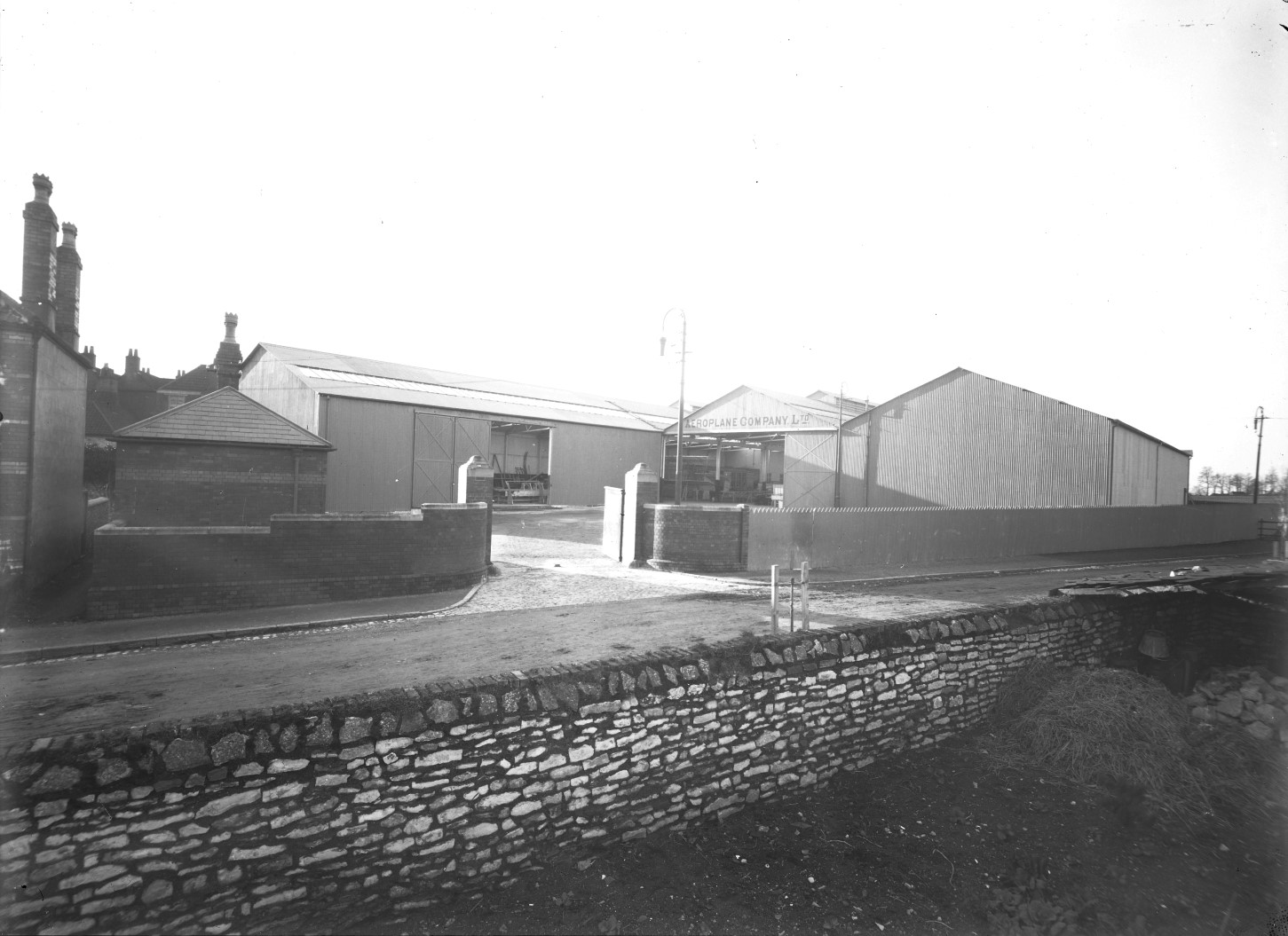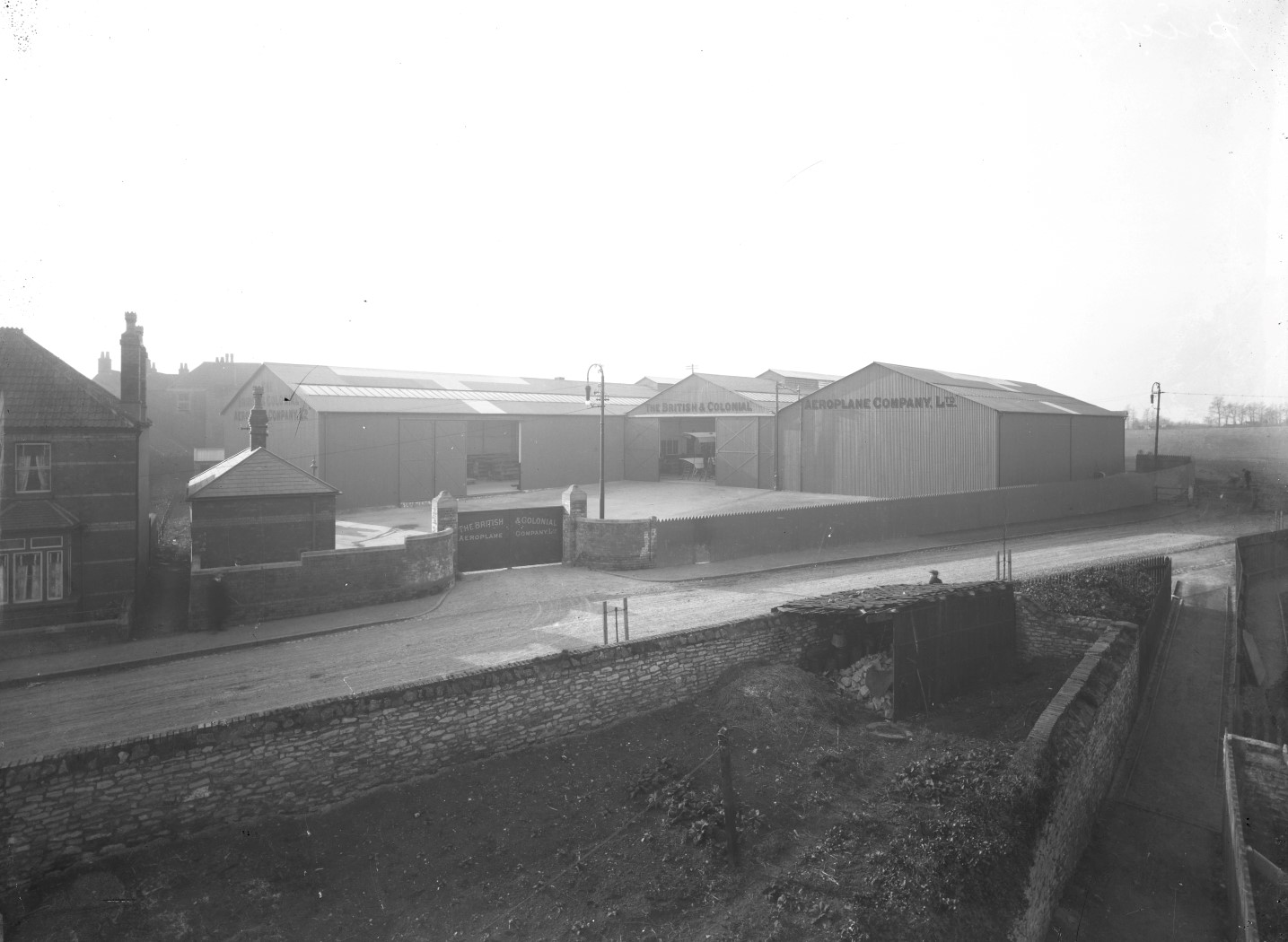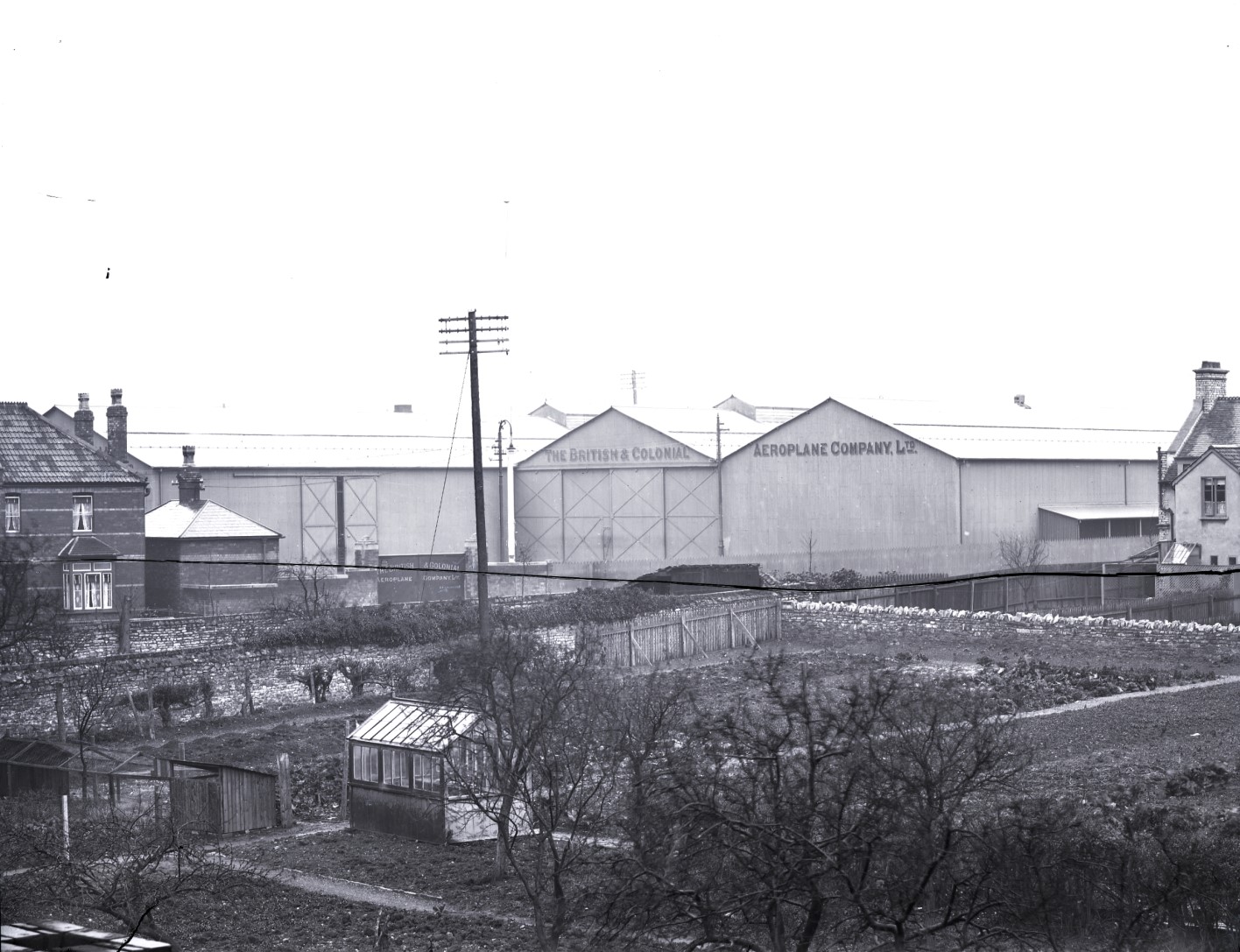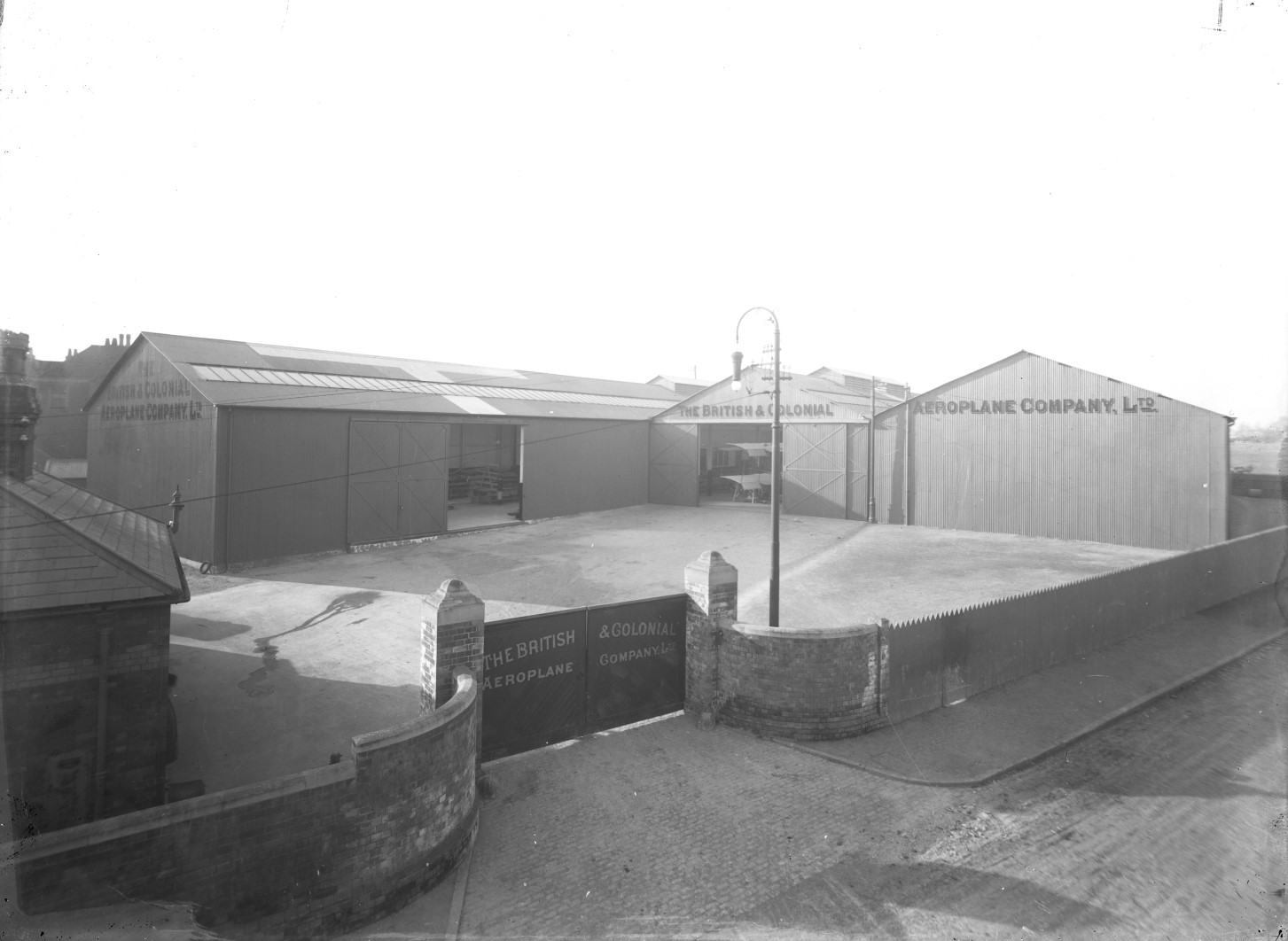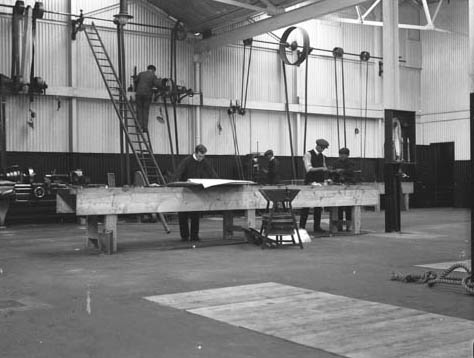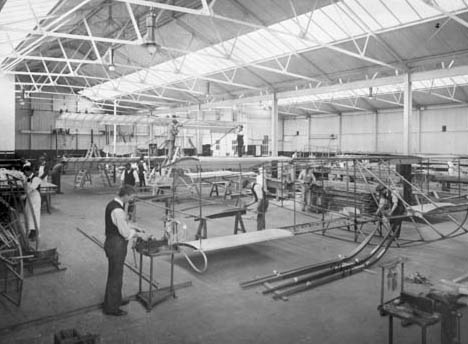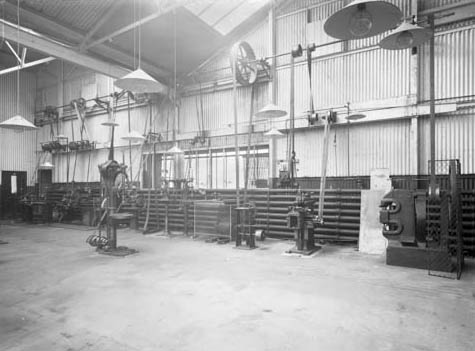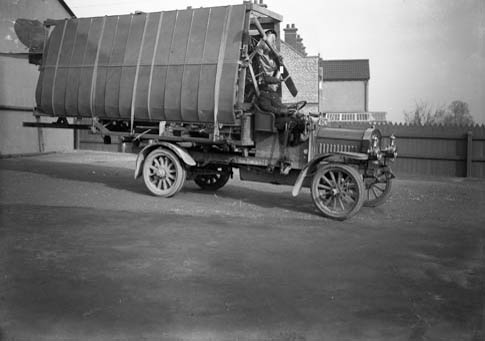Originally built for bus maintenance by the Bristol Tramway's and Carriage Company, the original Aircraft Works at Filton was quickly transformed into the base of production for the British and Colonial Aeroplane Company. Sir George White was also able to lease a number of surrounding houses to use for offices as well.
In the company's first eight months they had built forty machines and, by the beginning of 1911, the factory had doubled in size. In February 1911, a journalist from "The Aero" commented that the works were extremely suited to producing quality aeroplane work, with the works having "fine roof lights" and "dead level concrete floors".
The site was small but there was plenty of room for expansion and the location was very convenient for travel. In the early days of the British and Colonial Aeroplane Company, after assembly and initial static testing at the Filton works, the aircraft were dismantled and transported by road to the company’s flying schools in Larkhill or Brooklands.
